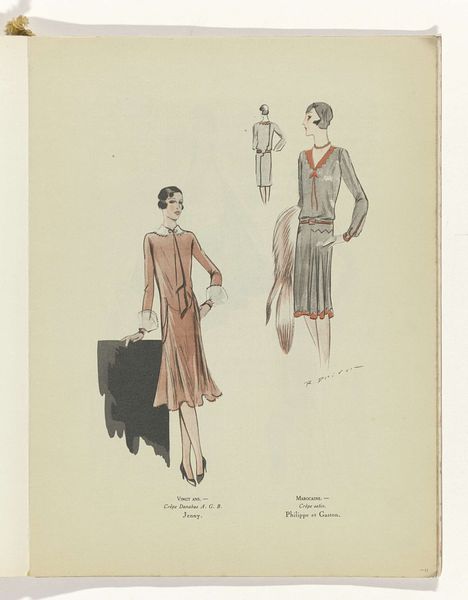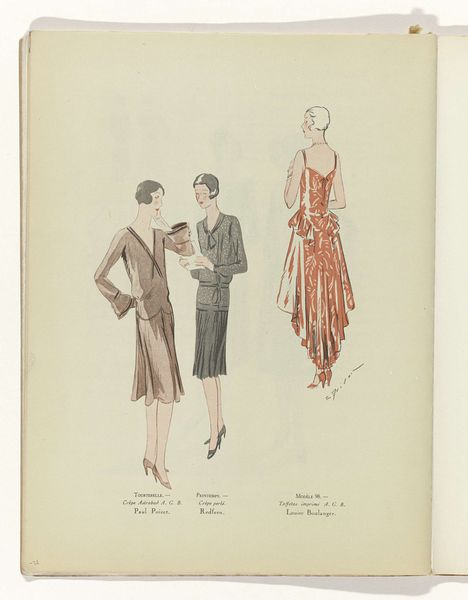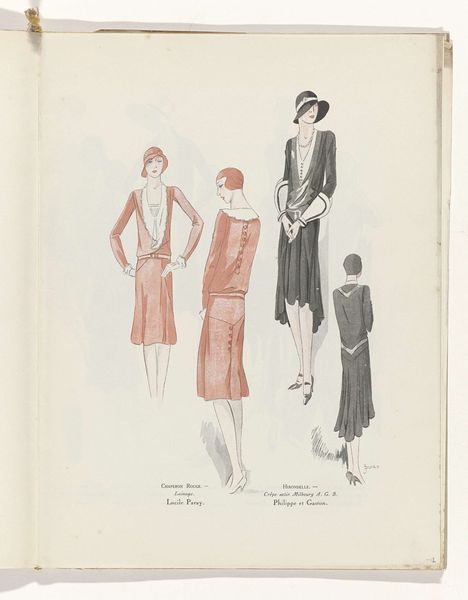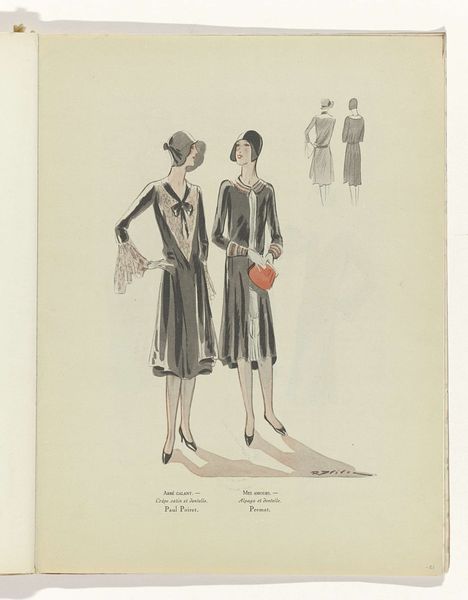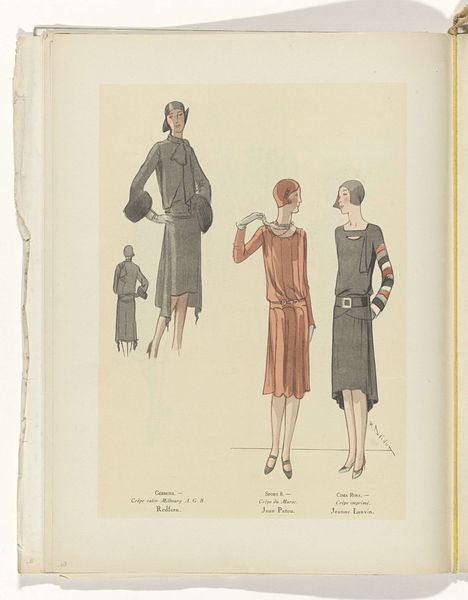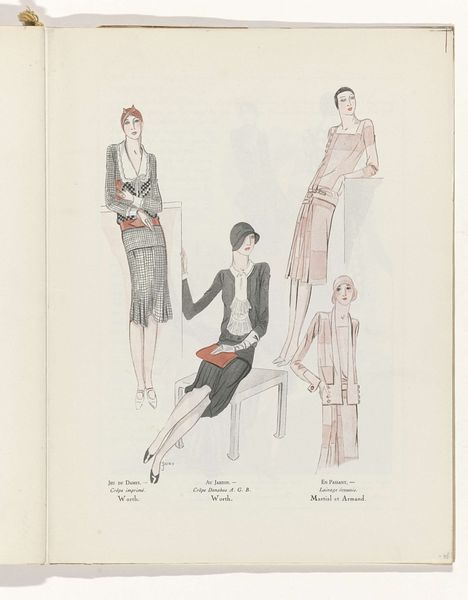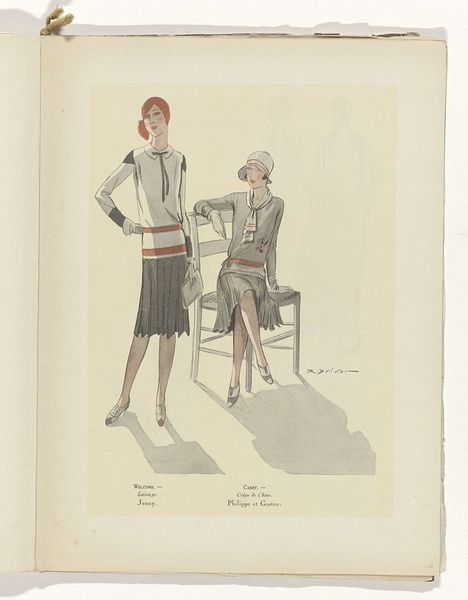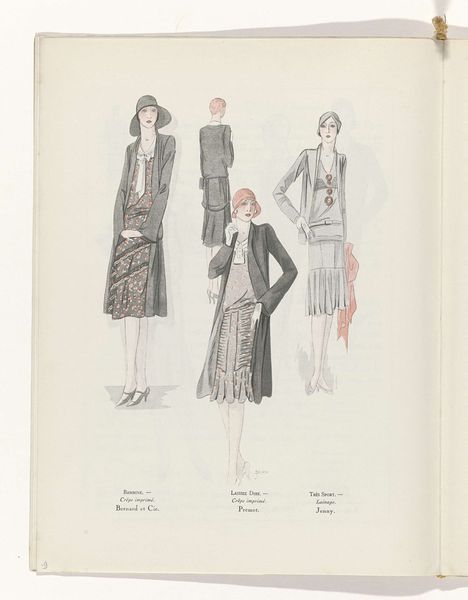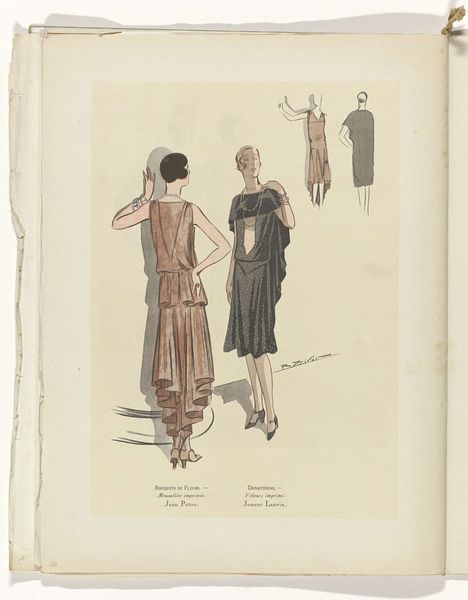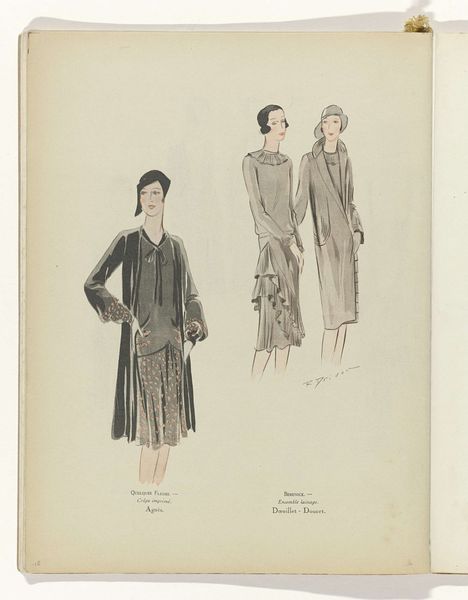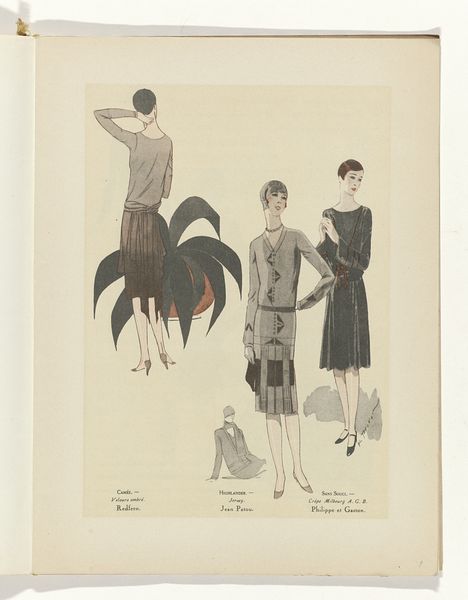
Art - Goût - Beauté, Feuillets de l' élégance féminine, Mai 1929, No. 105, 9e Année, p. 12 1929
0:00
0:00
drawing, paper, watercolor
#
portrait
#
art-deco
#
drawing
#
paper
#
watercolor
#
watercolour illustration
#
watercolor
Dimensions: height 315 mm, width 240 mm
Copyright: Rijks Museum: Open Domain
Curator: This watercolour illustration is a page from "Feuillets de l'Élégance Féminine", a French fashion magazine published in 1929, showcasing designs by R. Drivon. Editor: There's something so chic and understated about it. The limited palette—mostly muted reds and grays—gives it a sophisticated, almost melancholic air. The figures are stylized yet possess a graceful, elongated quality. Curator: Absolutely. Fashion magazines like these were more than just advertisements; they shaped and reflected the ideals of feminine beauty and aspiration in the interwar period. This particular publication reveals how new fabrics were being integrated for different occasions and how lines were evolving in couture. Editor: It’s striking to see the distinct styles side-by-side, almost like two paths fashion could take. We’ve got that flapper-esque fringed skirt next to a much more demure, almost austere design. The tension speaks volumes about women finding new roles in a rapidly changing society. It captures both modernity and restraint. Curator: Precisely. Notice the intentional lack of detail in the facial features. They're archetypes rather than individuals. These women embody roles more than selves—idealized consumers within a specific class. The fashion is highlighted, not the woman. Editor: But even those deliberately vague figures convey so much, and they certainly speak to the historical constraints that existed, that women weren't seen as fully fledged people beyond these kinds of signifiers, beauty, style... It highlights those boundaries in a powerful, yet subtle, way. You can't divorce art from its broader sociopolitical moment; it always reflects it back to us. Curator: And publications like this also played a role in constructing those constraints and ideals in a mass-produced way, shaping collective dreams and ambitions and what women ought to want. Editor: And it's through revisiting these sources that we begin to have richer discussions, interrogating the relationship between material culture and our constructed understandings of femininity. It lets us look at those images critically. Curator: Studying publications like these provides essential context in the discussion of aesthetics, desire, and even, the production and dissemination of knowledge itself, how trends influence perceptions. Editor: Yes, now more than ever, with access to imagery on such a broad global scale, works like this serve as reminder for how we can, and must, remain critical and contextual when consuming these visuals.
Comments
No comments
Be the first to comment and join the conversation on the ultimate creative platform.
